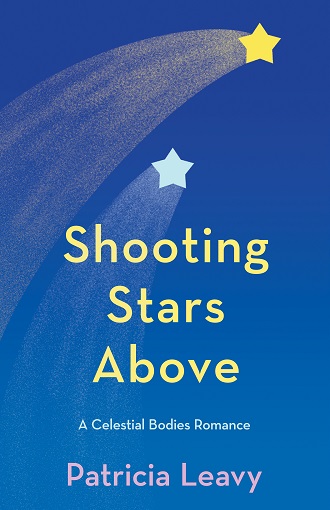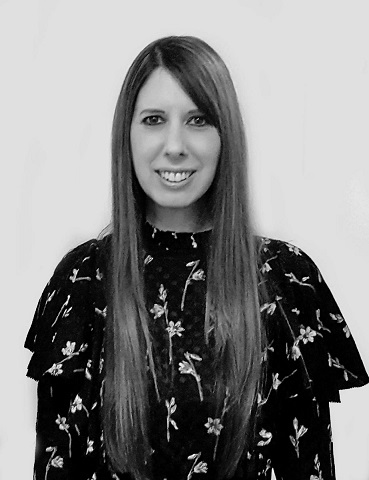When I was 10 years old, I tried to write a novel. I don’t remember all the details, but it was a love story about two people who help each other heal. I wasn’t able to finish it when I was 10. I think the seed lived inside of me my entire life.
Patricia Leavy – 18 March 2025
The Back Flap
Tess Lee is a world-famous novelist. Her inspirational books explore people’s innermost struggles and the human need to believe that there is light at the end of the tunnel—but despite her extraordinary success, she’s been unable to find personal happiness. Jack Miller is a federal agent working in counterterrorism. After spending decades immersed in a violent world, a residue remains. He’s dedicated everything to his job, leaving nothing for himself.
The night Tess and Jack meet, their connection is palpable. She examines the scars on his body and says, “I’ve never seen anyone whose outsides match my insides.” The two embark on an epic love story, but old traumas soon rise to the surface as Jack struggles with the death of a loved one and Tess is forced to confront her childhood abuse. Can unconditional love help heal their invisible wounds? Together, will they be able to move from darkness to light?
About the book
What is the book about?
It’s a love story. Really, it’s about the power of love to help us heal our visible and invisible wounds, and the struggle to balance darkness and light in our lives. The story follows world-famous inspirational novelist Tess Lee and counterterrorism agent Jack Miller. Both have given so much to others, but haunted by past violence, neither has been able to find personal happiness. The night Tess and Jack meet, their connection is palpable. She examines the scars on his body and says, “I’ve never seen anyone whose outsides match my insides.” Really, it’s a book about love in all forms—romantic, friendship, and learning to love ourselves.
When did you start writing the book?
I started writing it in late 2019. I was contracted to write a different novel, but I was struggling with it. One night I was sitting at my computer in my home office completely stuck. I stepped out onto the balcony and looked up at the stars. Like a bolt, Shooting Stars Above came to me, as a complete book.
How long did it take you to write it?
I wrote the first draft in only 10 days. I’ve never had an experience like it, not before or since. I worked day and night, completely immersed in the story world. I didn’t go online and if anyone spoke to me, I’m sure I didn’t hear a word they said. In fact, I even sent my husband away for a few days. It was the most immersive experience of my life. Of course, I’ve revised it countless times since and spent lots of time on it, but the book remains true to the original draft.
Where did you get the idea from?
When I was 10 years old, I tried to write a novel. I don’t remember all the details, but it was a love story about two people who help each other heal. I wasn’t able to finish it when I was 10. I think the seed lived inside of me my entire life. Shooting Stars Above is that novel.
Were there any parts of the book where you struggled?
There are some dark scenes in this book. The protagonist suffers from PTSD as a result of childhood sexual abuse and rape. Those scenes were emotionally challenging.
What came easily?
All of it. It just flowed out of me. I love these characters and their bonds more than any other characters I’ve written. I especially loved writing scenes with Tess and Jack and scenes with Tess and Omar, her best friend. He’s the kind of bestie we all want, and their bond is beautiful.
Are your characters entirely fictitious or have you borrowed from real world people you know?
They’re fictitious but we all borrow from life. As artists, everything comes through our filter.
We all know how important it is for writers to read. Are there any particular authors that have influenced how you write and, if so, how have they influenced you?
So many. Carolyn Ellis and Laurel Richardson have taught me to be vulnerable and brave, and how to weave social commentary into creative writing. Meg Donahue has shown me how to write with compassion and give characters depth. Colleen Hoover reminds me to be honest about women’s experiences, including their fantasies. Candace Bushnell reminds me to always have fun with it, and balance the tender moments with humor, lightness, and a little irreverence. One of my favorite authors of all time, Simone de Beauvoir inspires me to explore important themes and questions about women’s lives.
Do you have a target reader?
Anyone who enjoys a love story or who may be looking for a little inspiration.
About Writing
Do you have a writing process? If so can you please describe it?
I get an idea, which could come from anywhere, some personal experience, an observation, something I overhear at a café, a topic I’m interested in, a piece of art, whatever, and then I stew on it until it crystalizes in my mind. Once I can see an entire scene play out in my mind like a film, or sometimes an entire novel, I start writing, or in some cases doing research to enable me to write. While this is generally my process, the truth is, it never really happens exactly the same way twice which is why I’m still so in love with writing.
Do you outline? If so, do you do so extensively or just chapter headings and a couple of sentences?
I outline extensively for nonfiction. With fiction, I fly by the seat of my pants. When I have an idea that I feel is really there—at least par baked—I just start writing. I have written novels chronologically, but more often, I write scenes, out of order, and then stitch them together.
Do you edit as you go or wait until you’ve finished?
I edit as I go, usually dozens of times per chapter or even per scene. I solicit feedback chapter by chapter and edit more. Then when I have a full draft, I edit many more times before it goes to a copyeditor, which always leads to more revisions.
Do you listen to music while you write? If yes, what gets the fingers tapping?
I don’t, but I listen to music just about every waking moment when I’m not writing. I especially love women singer-songwriters. You can learn a lot about structure, using repetition purposefully, developing tone, building emotionality, writing with specificity but also with metaphor and symbolism, and writing from the perspectives of girls and women.
About Publishing
Did you submit your work to Agents?
I have, but decided it was not the right path for me. You never know what the future will hold, but these days I’m really happy where I am.
What made you decide to go Indie, whether self-publishing or with an indie publisher? Was it a particular event or a gradual process?
I’ve worked with all different kinds of publishers over the years. I started my career with one of the biggest with a stellar reputation. Let’s just say, it didn’t live up to my fantasies. Since then, I’ve worked with all different kinds of publishers, including other biggies. My best experiences have consistently been with indie presses. It’s more personal, more humanizing. There’s more support for what’s always a bumpy journey. You feel like you’re in it together. I’m glad to be involved in all phases of the process, from production to promotion. I also like having more ownership over my work—after two decades and 50 plus books—that’s become vitally important to me as an artist. The funny thing is, over the course of my career, my most successful books have always been with indie presses. It’s so counter to what people assume.
Did you get your book cover professionally done or did you do it yourself?
It was professionally done. The designer came up with several mock-ups based on my ideas. This one just felt completely right. I absolutely love it.
Do you have a marketing plan for the book or are you just winging it?
I was fortunate to be able to hire a terrific publicity team as well as a marketing professional. I do also have my own marketing plan, which I do for all my books, regardless of the publisher and any outside help.
Any advice that you would like to give to other newbies considering becoming Indie authors?
Learn as much as you can about the process. Understand that you’ll need to wear two hats, as a writer and as an author working in the publishing industry. They’re not the same thing. Writers spend their days in story worlds. It’s very private. Authors negotiate, pitch themselves and their work, deal with critique, and more. It’s very public. Try to find ways to protect the creative side of yourself, while doing what you need to do to be an author. Have fun with it.
About You
Where did you grow up?
Outside of Boston.
Where do you live now?
Maine, not far from the sea.
What would you like readers to know about you?
I had an entirely different career. I wanted to be a writer since I was very little, but was too afraid to pursue it. Instead, I became a professor. Yet writing was my true passion. For years, I pursued it as a side hustle until I finally made the leap more than a decade ago. I’ve never looked back. I share this so that others will know, it’s never too late to follow your passions.
What are you working on now?
Shooting Stars Above is the first in the Celestial Bodies Romance series. There are six books written and I love each more than the one before. We’ll be releasing one each spring. I also have several other romances written which will be rolling out each fall. The next one is called Cinematic Destinies. It’s the third and final book in a trilogy that follows the love story of Ella and Finn. The first two books, The Location Shoot and After the Red Carpet are out now.
End of Interview:
For more from Patricia Leavy, check out her website and follow her on Facebook, Instagram, and Twitter.
Get your copy of Shooting Stars Above from Amazon US.


